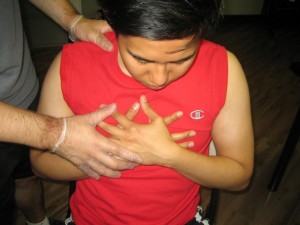
The two different types of dyspareunia will determine the pain location, however, it is generally described as a persistent or recurrent pain in the genitalia. Dyspareunia generally causes discomfort to women and their sexual partners. Treatment will usually depending on the underlying cause.
What are the Types of Dyspareunia?
There are two different types of dyspareunia which are differentiated based on their location of pain.
- Superficial dyspareunia (Entry dyspareunia)
- Pain upon penetration attempt
- Pain is located at the genitalia
- Deep dyspareunia
- Pain upon thrusting
- Pain is located at the top of the vagina or the abdomen
What Causes Dyspareunia?
The cause will also vary depending on the type of dyspareunia. The following are the most common causes:
- Superficial dyspareunia
- Inadequate lubrication leading to dry vagina (may be caused by certain medications)
- Irritation, trauma or injury
- Inflammation or infection, such as skin disorders
- Vaginismus: spontaneous contractions of the vaginal wall muscles
- Deep dyspareunia
- Certain diseases and conditions: endometriosis, cystitis, pelvic inflammatory disease, haemorrhoids, etc.
- Recent surgeries or medical treatments
- Emotional factors
- History of sexual abuse
- Psychological problems
- stress
What are the Symptoms of Dyspareunia?
Although dyspareunia is not a disease on its own, it can have several accompanying symptoms that include:
- Pain in the vagina, clitoris or labia upon penetration
- Burning, tearing or aching sensation
- Occurrence of pain even while inserting tampons
- New pain after previously no pain intercourse
- Deep pain during thrusting
How is Dyspareunia Treated?
When one experiences dyspareunia, always seek a gynaecologist’s advice to determine right diagnosis and give proper treatment for underlying cause. However, in cases wherein a doctor cannot be visited, the following first aid tips are advised that may help reduce pain and discomfort:
- Avoid sexual intercourse and other sexual activities. It is also possible to increase lubrication by increasing foreplay time.
- Vaginal lubricants and pelvic relaxation exercise may also be helpful.
- To help relieve of pain, try sitz baths. Sitz baths are warm water baths in a sitting position.
- Infections may require topical antifungal ointments or antibiotics depending on the cause.
Disclaimer: This article should not be used for medical diagnosis or advice. It is always better to recognize symptoms early to avoid complications from developing. To learn how to apply first aid in dyspareunia and other bodily pains, enrol in First Aid Courses.
